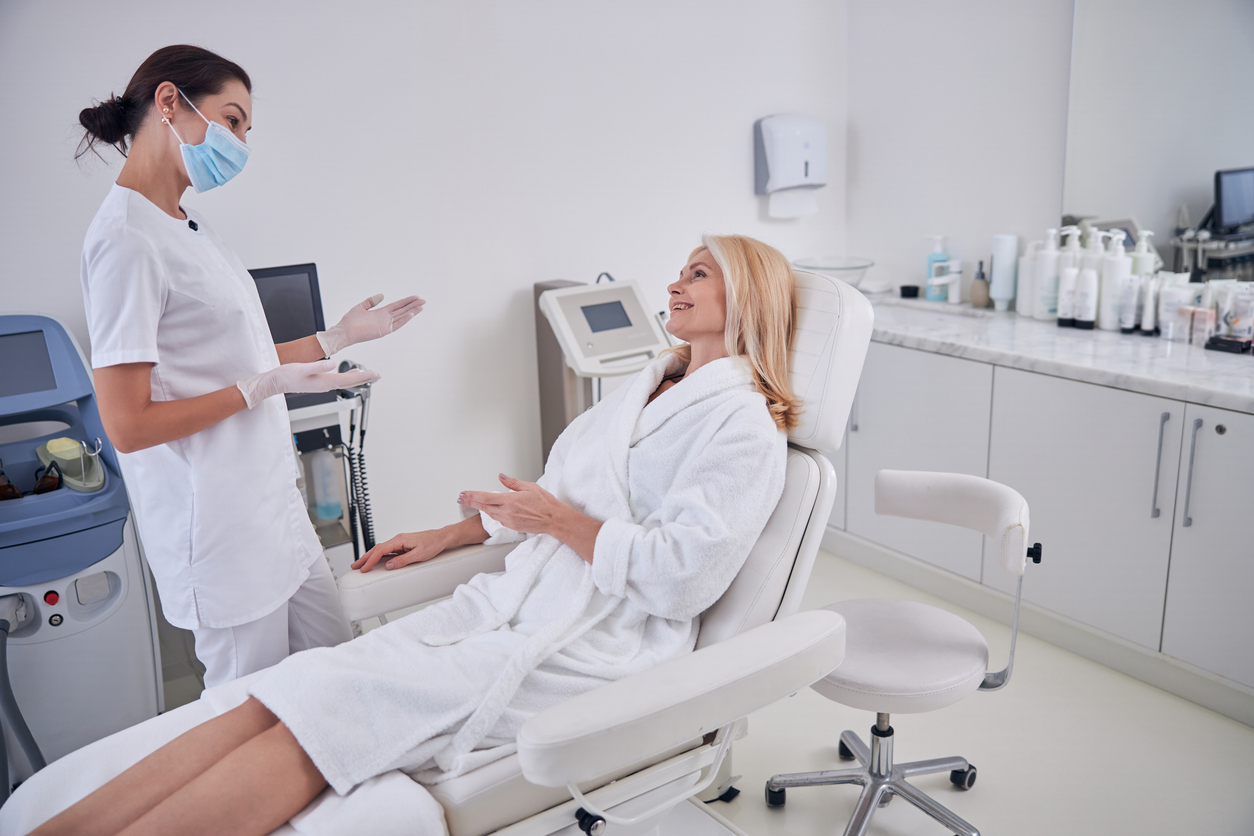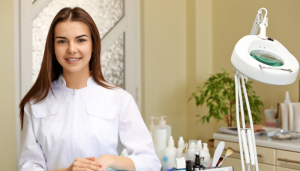Digital Marketing Agency for Cosmetic Industry

Table of Contents
ToggleDigital marketing for cosmetics isn’t just about flashy ads or trendy social media posts. It’s about understanding what makes a brand tick and connecting with people in a meaningful way. In the world of beauty, where looks matter, standing out online is more important than ever.
This article takes you through the ins and outs of cosmetic digital marketing, offering a fresh perspective on how to make your brand shine in the digital space.
Key Takeaways
Cosmetic digital marketing is more than just online ads; it’s about building a brand’s identity and connecting with the audience.
A strong online presence requires a well-designed website, active social media engagement, and effective SEO strategies.
Personalised content and influencer partnerships can significantly boost audience engagement and brand loyalty.
Understanding your audience and choosing the right advertising channels can maximise your return on investment.
Staying updated with trends like AI, sustainability, and virtual reality is crucial for future success in the cosmetic industry.
Understanding the Core of Cosmetic Digital Marketing
Defining Cosmetic Digital Marketing
Cosmetic digital marketing is all about promoting beauty products and services in the online space. It’s a way for brands to connect with their audience using digital tools and platforms.
Digital marketing in cosmetics focuses on creating a strong online presence, engaging content, and targeted advertising. This approach helps brands stand out in a crowded market and reach their target customers effectively.
Key Components of a Successful Strategy
A successful cosmetic digital marketing strategy involves several key components:
Audience Understanding: Knowing who your customers are and what they want.
Content Creation: Developing engaging and relevant content that resonates with your audience.
Social Media Engagement: Using platforms like Instagram and TikTok to connect with users.
SEO and SEM: Optimising your website for search engines and using paid ads to increase visibility.
Analytics: Measuring and analysing data to refine your strategy and improve results.
The Role of Creativity and Innovation
Brands need to think outside the box to capture their audience’s attention. This might involve using new technologies like augmented reality for virtual try-ons, or collaborating with influencers to reach a wider audience. Innovation keeps the brand fresh and exciting, ensuring it stays ahead of the competition.
Embracing creativity and innovation in digital marketing can transform how a cosmetic brand interacts with its audience, leading to stronger connections and increased loyalty.
Building a Strong Online Presence for Cosmetic Brands
Creating a solid online presence is like setting the foundation for a house. It’s essential for cosmetic brands to thrive in today’s market. Let’s break it down.
Optimising Your Website for User Experience
Your website design is often the first impression potential customers have of your brand. It’s like your digital storefront.
Make sure it’s welcoming, easy to navigate, and reflects your brand’s identity. A slow, cluttered site can turn visitors away faster than you can say ‘lipstick’.
Speed Matters: Ensure your site loads quickly. No one likes waiting.
Mobile-Friendly: With many users browsing on their phones, your site should look great on any device.
Clear Navigation: Help users find what they need without hassle.
Leveraging Social Media Platforms
Social media isn’t just for selfies and cat videos. It’s a powerful tool for connecting with your audience.
Choose the Right Platforms: Not all social media sites are created equal. Find where your audience hangs out.
Engage Authentically: Talk with your followers, not at them. Share behind-the-scenes content, ask for opinions, and respond to comments.
Consistent Branding: Your social media should reflect your brand’s voice and style.
The Importance of SEO in Cosmetic Marketing
Search Engine Optimisation is like the secret sauce for getting found online. It’s not just about keywords; it’s about understanding what your audience is searching for.
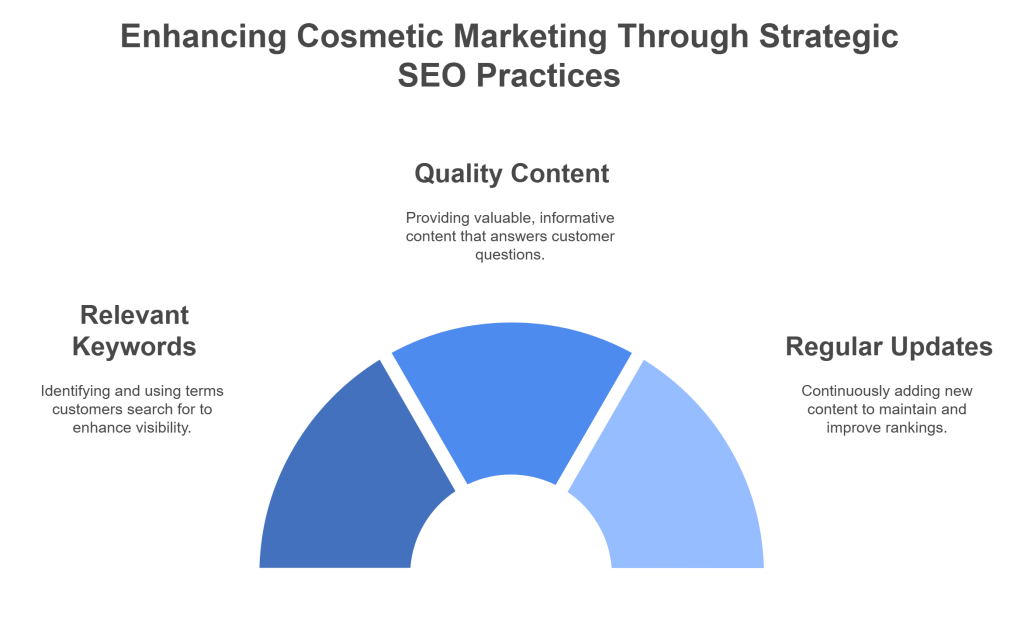
Building a strong online presence isn’t just about being seen; it’s about being remembered. Focus on user experience, engage with your audience, and ensure your brand speaks clearly across all platforms.
Engaging Your Audience Through Personalised Content
Creating Compelling Visual Content
In this industry, visuals speak louder than words. Creating visually stunning content is not just about aesthetics, but about capturing the essence of your brand. Use high-quality images and videos to showcase your products in action.
Consider “before-and-after” shots or tutorials that demonstrate product effectiveness. A well-crafted visual can instantly communicate the benefits and allure of your cosmetics, making them irresistible to potential customers.
Utilising Influencer Collaborations
Partnering with influencers can be a game-changer for cosmetic brands. Micro-influencers, in particular, offer authenticity and relatability that larger influencers may lack. They connect with niche audiences on a personal level, often resulting in higher engagement rates.
Select influencers whose values align with your brand, and collaborate on content that feels genuine and engaging. This collaboration can take the form of product reviews, tutorials, or even live Q&A sessions.
Crafting Tailored Email Campaigns
Email marketing remains a powerful tool for reaching your audience directly. By segmenting your email list, you can send personalised messages that resonate with different customer groups.
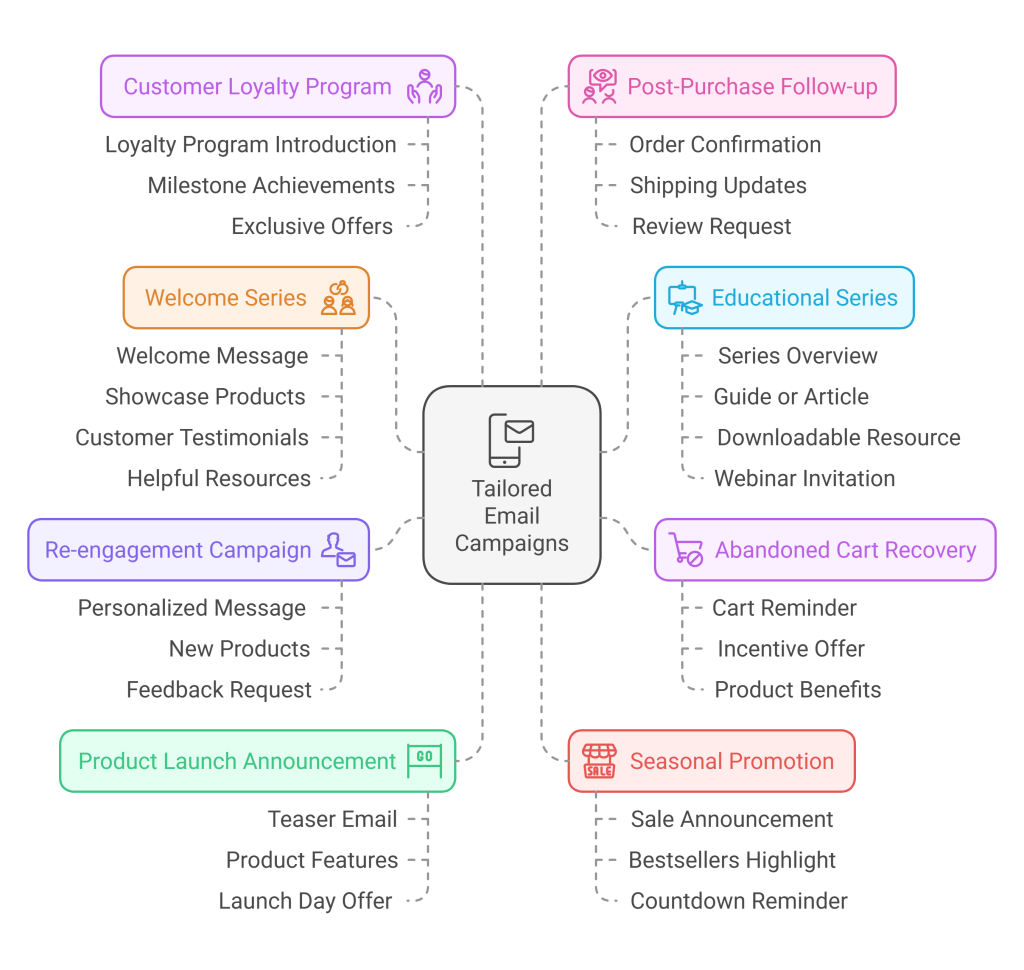
Personalisation in email campaigns can significantly boost open rates and conversions, transforming casual browsers into loyal customers.
The key to successful personalised content is understanding your audience’s needs and preferences. By tailoring your approach and engaging with them authentically, you create a loyal community that feels valued and understood.
Maximising ROI with Targeted Advertising
Understanding Your Audience Demographics
To get the best results from your advertising efforts, it’s important to know who you’re talking to. Start by breaking down your audience into groups based on age, gender, location, and interests. This way, you can create ads that speak directly to each group.
Knowing your audience helps you spend your money wisely and get more bang for your buck.
Measuring and Analysing Campaign Performance
Once your ads are running, it’s time to see how they’re doing. Look at metrics like click-through rates, conversions, and return on ad spend. This data tells you what’s working and what needs tweaking. Regularly reviewing this information helps you adjust your strategy, so you keep improving and getting better results over time.
Advertising is not just about spending money to get noticed. It’s about understanding your audience, choosing the right channels, and constantly refining your approach to achieve the best return on investment.
Enhancing Customer Experience in the Digital Space
Streamlining the Online Booking Process
The online booking process is often the first point of contact between a cosmetic brand and its customers. Making this process smooth and intuitive is key to a positive customer experience.
Consider implementing a user-friendly interface that allows customers to easily select services, choose their preferred timing, and receive instant confirmations.
Here’s a simple checklist to enhance your booking system:
Ensure mobile compatibility for on-the-go bookings.
Provide clear descriptions of services to avoid confusion.
Offer flexible payment options to cater to diverse customer needs.
Implementing Effective Customer Feedback Systems
Feedback is a goldmine for understanding customer satisfaction and areas needing improvement. Set up a system that encourages customers to share their thoughts post-purchase.
This could be through:
Short surveys sent via email or SMS.
In-app feedback forms for quick responses.
Incentives such as discounts for completing feedback.
A well-rounded feedback system not only helps in refining your services but also builds trust as customers feel their opinions matter.
Building Long-term Client Relationships
Creating lasting relationships with clients goes beyond the transaction. It’s about making them feel valued and part of the brand community. Strategies to foster these relationships include:
Personalised communication: Use customer data to send tailored messages and offers.
Loyalty programmes: Reward repeat customers with exclusive deals or early access to new products.
Community engagement: Host online events or forums where customers can interact and share experiences.
Building a strong connection with your audience is not just beneficial for immediate sales; it’s an investment in future loyalty and advocacy. By prioritising customer experience, cosmetic brands can not only retain existing clients but also attract new ones through positive word-of-mouth.
Navigating Challenges in Cosmetic Digital Marketing
Overcoming Industry-Specific Hurdles
The cosmetic industry is not without its unique set of hurdles. From ever-changing trends to strict regulations, navigating these waters requires a keen understanding of the market. Staying ahead of trends is vital.
Brands must consistently monitor industry shifts and consumer preferences. A proactive approach can help in adapting marketing strategies swiftly. Additionally, compliance with advertising standards is crucial. This means understanding and adhering to guidelines that govern product claims and promotional content.
Adapting to Changing Consumer Behaviours
Consumer behaviour in the cosmetic world is as dynamic as the products themselves. With the rise of digital platforms, customers now have more access to information and choices than ever before.
It’s important to understand that today’s consumers are well-informed and demand transparency. Brands should focus on building trust through authentic engagement and clear communication. This might involve leveraging data analytics to understand consumer preferences and tailoring marketing efforts to meet these expectations.
Ensuring Compliance with Advertising Regulations
Advertising regulations in the cosmetic sector can be complex. From ingredient disclosures to health claims, brands must tread carefully. Compliance not only protects the company from potential legal issues but also builds consumer trust.
A structured approach is recommended:
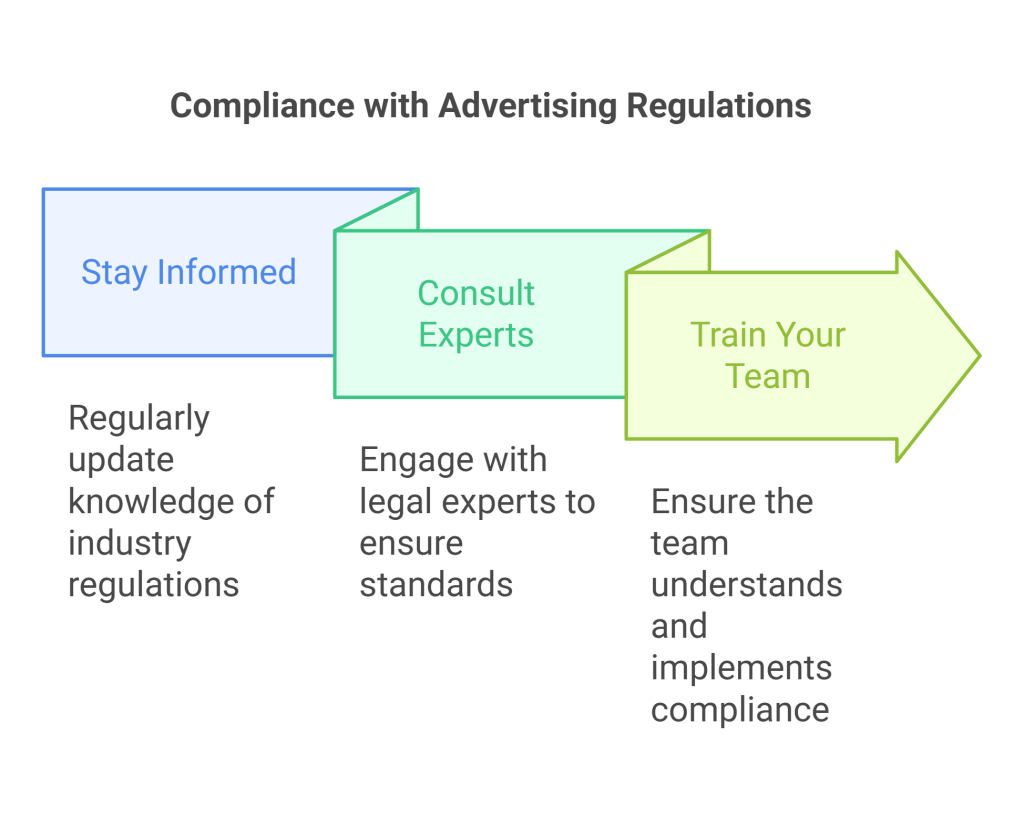
Navigating these challenges requires a balance of creativity and diligence. By staying informed and adaptable, brands can not only overcome these hurdles but also turn them into opportunities for growth.
Future Trends in Cosmetic Digital Marketing
The Rise of AI and Automation
Artificial intelligence is transforming cosmetic digital marketing. From chatbots providing customer service to AI-driven analytics offering deep insights into consumer behaviour, automation is streamlining operations and enhancing customer interactions.
AI tools can analyse vast amounts of data quickly, allowing marketers to make informed decisions about product launches and promotions. Automation in marketing campaigns also ensures consistent engagement with audiences, freeing up human resources for creative tasks.
Sustainability and Ethical Marketing Practises
Consumers are becoming increasingly conscious of sustainability and ethics in the brands they support. Cosmetic brands are responding by adopting eco-friendly practises and transparent marketing strategies.
This shift is not just about reducing carbon footprints but also about promoting ethical sourcing and production methods. Brands that communicate their commitment to sustainability effectively can build stronger connections with their audience.
The Growing Influence of Virtual Reality
Virtual reality is no longer just a futuristic concept; it’s becoming a significant tool in marketing. VR can offer immersive experiences, allowing customers to “try on” products virtually or explore brand stories in a unique way.
This technology can enhance the shopping experience, making it more interactive and personalised. As VR technology becomes more accessible, its role in cosmetic digital marketing will likely expand, offering new opportunities for engagement and innovation.
As the digital landscape evolves, cosmetic brands must adapt to these emerging trends to stay competitive. Embracing technology and ethical practises not only meets consumer expectations but also sets the stage for future growth.
Conclusion
Digital marketing in the cosmetics industry isn’t just a trend—it’s a necessity. With the right strategies, businesses can reach more customers, build stronger relationships, and ultimately, boost their sales. It’s about finding what works best for your brand and sticking with it.
So, take the leap, explore the digital landscape, and watch your business grow. Remember, in this digital age, staying ahead means staying informed and adaptable. Here’s to your success in the ever-evolving world of cosmetic digital marketing.
Frequently Asked Questions
What is cosmetic digital marketing?
Cosmetic digital marketing is all about using online tools and platforms to promote beauty and skincare products. It involves strategies like social media advertising, email campaigns, and SEO to reach more people and boost sales.
Why is SEO important for cosmetic brands?
SEO helps cosmetic brands appear higher in search results, making it easier for potential customers to find them. This means more website visits and a better chance of selling products.
How can social media help cosmetic brands?
Social media is a powerful way for cosmetic brands to connect with their audience. By sharing engaging content and interacting with followers, brands can build a loyal community and increase brand awareness.
What role do influencers play in cosmetic marketing?
Influencers can greatly impact cosmetic marketing by promoting products to their followers. Their recommendations can help brands reach new audiences and build trust with potential customers.
How do cosmetic brands personalise their marketing?
Cosmetic brands personalise their marketing by using data to understand customer preferences and tailoring their messages accordingly. This could include personalised emails, product recommendations, and special offers.
What are some challenges in cosmetic digital marketing?
Challenges in cosmetic digital marketing include staying up-to-date with trends, managing online reputation, and ensuring compliance with advertising regulations. Brands must be adaptable and proactive to overcome these hurdles.

